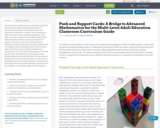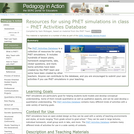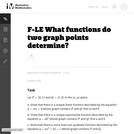
This resource was created by the Washington Office of Superintendent of Public Instruction.
- Subject:
- Mathematics
- Material Type:
- Assessment
- Lesson
- Author:
- Hannah Hynes-Petty
- Date Added:
- 03/31/2020

This resource was created by the Washington Office of Superintendent of Public Instruction.

Adult education classrooms are commonly comprised of learners who have widely disparate levels of mathematical problem-solving skills. This is true regardless of what level a student may be assessed at when entering an adult education program or what level class they are placed in. Providing students with differentiated instruction in the form of Push and Support cards is one way to level this imbalance, keeping all students engaged in one high-cognitive task that supports and encourages learners who are stuck, while at the same time, providing extensions for students who move through the initial phase of the task quickly. Thus, all
students are continually moving forward during the activity, and when the task ends, all students have made progress in their journey towards developing conceptual understanding of mathematical ideas along with a productive disposition, belief in one’s own ability to successfully engage with mathematics.

The PhET Activities Database is a collection of resources for using PhET sims. It includes hundreds of lesson plans, homework assignments, labs, clicker questions, and more. Some activities have been created by the PhET team and some have been created by teachers.

The purpose of this task is to give students an opportunity to explore various aspects of exponential models (e.g., distinguishing between constant absolute growth and constant relative growth, solving equations using logarithms, applying compound interest formulas) in the context of a real world problem with ties to developing financial literacy skills.

This resource is geared for teacher use. It is loosely linked to the Secondary Math II, Mathematics Vision Project curriculum.

These problems give students the opportunity to construct and compare linear, quadratic, and exponential models.